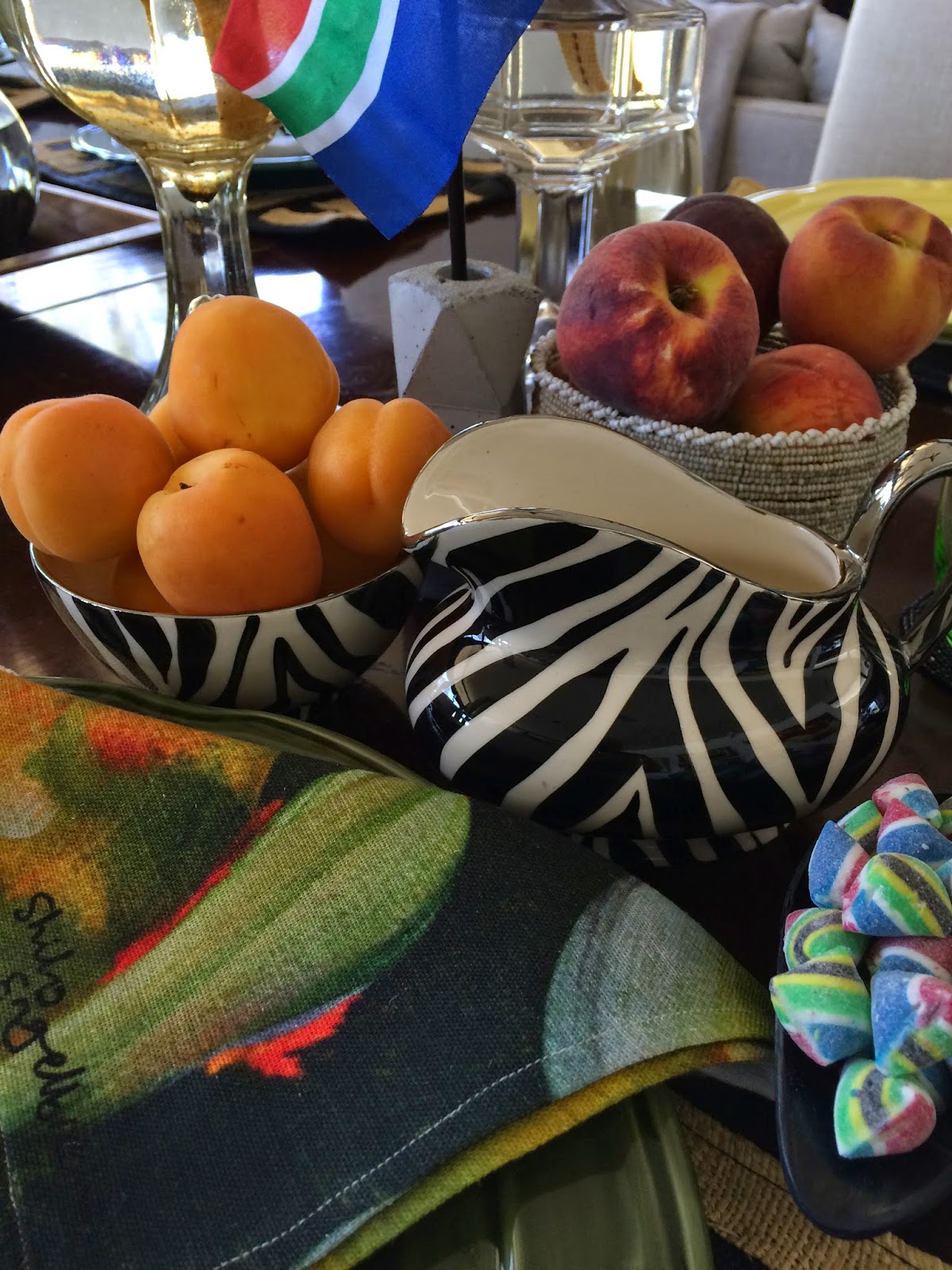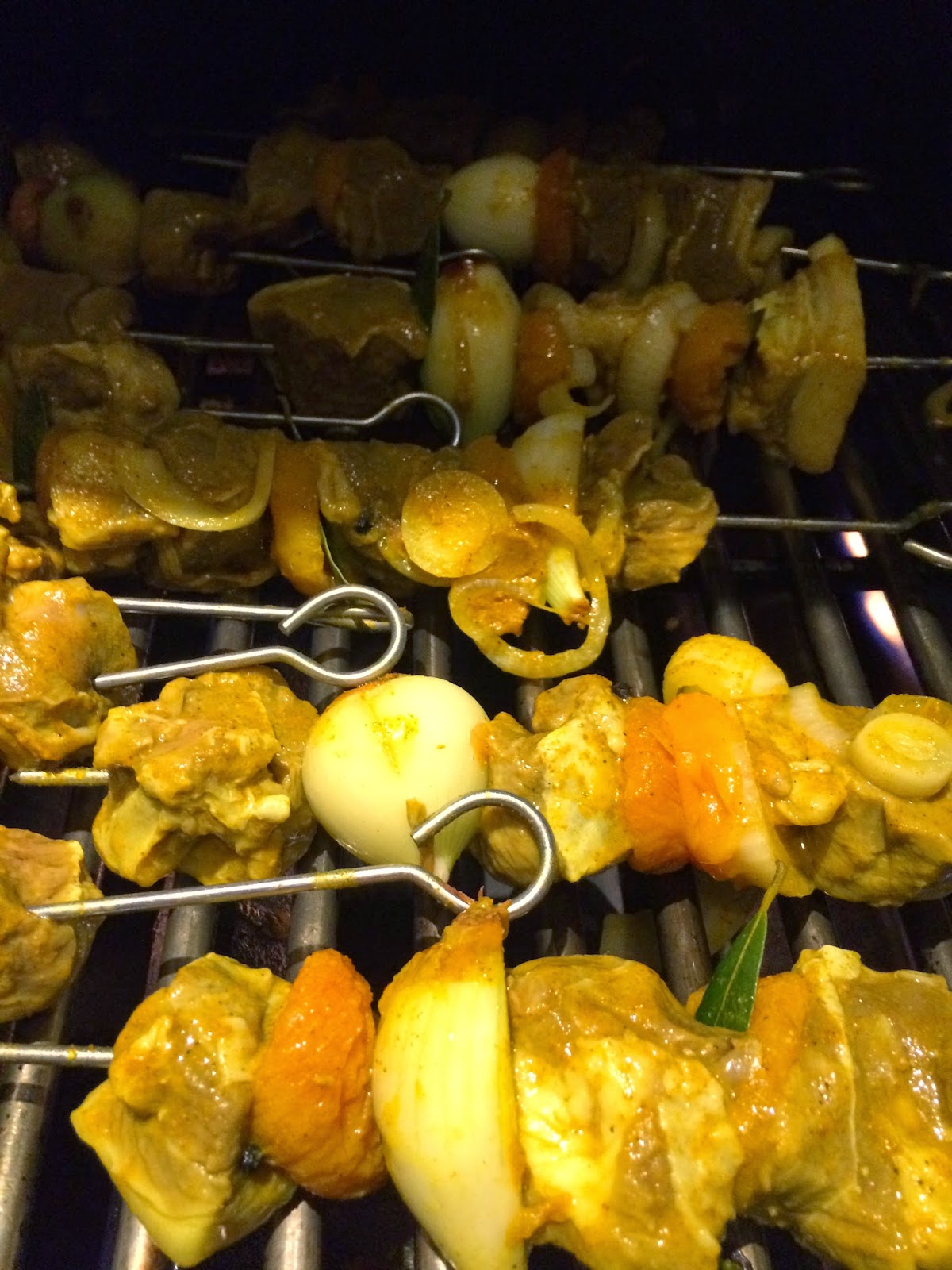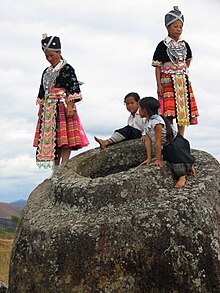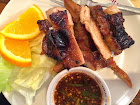It is only fitting to end our 52 week culinary safari in South Africa. We are going back to my roots. Back to the place that shaped my palate and stimulated my culinary curiosity. We are travelling to the southern-most tip of Africa, where two oceans meet (sometimes in fury) and the world's most famous piece of rock dominates the sky-line. My hometown. The Mother City. Cape Town. Home to the world's richest botanical kingdom of mountain heath and spring flowers. It is no wonder that the local Coloured population refers to the Cape as "The Lord's Headquarters".
The world map changed dramatically in the 15th century as Portuguese explorers sailed the unknown West Coast of Africa en route to the East. The Cape became prominent - initially known as Cabo Formentosa (Cape of Storms) and later, as it established itself as an important re-fueling station (in every possible sense of the word...) it changed to Cabo de Boa Esperanza ( Cape of Good Hope).
In 1652 the management of the Dutch trade and sea-faring company Die Vereenigde Oost-Indische Compagnie (called Die Here XVII) sent a group of Dutch officials, under the command of Jan van Riebeeck, to set up a post to refresh fleets under the watchful eye of Table Mountain. A passionate gardener, he immediately set about planting vegetables from imported seeds, and discovered native plants like geelsuring, wild mustard leaves (cruciferae) and wild asparagus. Vine rootstocks from France, Italy, Portugal and Spain were shipped in, and by 1659 the first grapes were pressed for making wine. Free-settlers were given land to grow grain, and fish (Steenbras, Snoek and Kabeljou) were harvested from the oceans. The only produce that had the better of JvR was meat. Cattle died on the long sea-journey, and those that survived were either killed by predators or stolen by the local Khoi people. He decided to start a breeding program on Robben Island, and a bartering system with the Khoi. Meanwhile JvR sourced protein from other, more abundant sources: dassies, porcupines, tortoises and penguin eggs all featured proudly on the menus of The Castle in Table Bay.
When Simon van der Stel took over in 1679, the burgers were becoming more prosperous. He wrote to the Here XVII: " The population wants for nothing." This allowed them to experiment and explore with the food they had available.They dried seasonal fruits, preserved the abundance of vegetables and cured meat. The population grew, with many immigrants influencing the cuisine of The Cape: The Dutch established the dairy industry and cheesemaking, they loved to cook with butter and nutmeg, and introduced pancakes and poffertjies. The Germans (mostly sailors and soldiers that sailed past and decided to stay, and later skilled tradesmen and teachers) are partially responsible for the development of Boerewors. The French introduced rich sauces, cooking every part of the animal (offal....or pens en pootjies) , marinating meat and fish in wine , and the delicate seasoning with herbs. And then of course there was the introduction of Eastern flavours from Malaysia. Known as "The King of Slaves", the Cape Malay men were tailors, cabinet makers and musicians. The Malay women were sought-after cooks with a flair for combining spices like turmeric, ginger, garlic, saffron, mustard and chili, and making chutneys and atjars. The local Khoi people gave us watercress and waterblommetjies (water flowers growing prolifically on the freshwater dams in the Boland, and found nowhere else in the world). The native African tribes had no influence on the development of Cape Cuisine as they were too far inland and only encountered in the middle of the 18th century.
I have always enjoyed cooking, and even entered a cooking competition with my very good friend Gera in grade 10. I struggle to pass a bookshop without buying (another) cookbook, and I have boxes and boxes filled with recipes torn from magazines. Even though we now live on the other side of the world, I can still smell my mum's Sunday leg of lamb roast wafting up to my bedroom, and taste the delicate sweetness of a crayfish tail grilled over an open fire on the beach, or the distinctive herbaceous qualities of a Karoo tjoppie (cutlet) on the braai. No matter which country you visit, it is usually the food that leaves the most lasting impression.
Last night I cooked our final Friday-Night-Out meal for those who helped me get through this 52 week mission. I wanted to serve a bit of my childhood, a bit of my culture and my treasured heritage to my family and friends.The food that I associate with my place of origin. Lekker eet!
We started preparations two days before: meat had to marinate, syrup had to chill and flavours had to infuse. On arrival, I served oven-roasted pears (seasoned with fresh rosemary and pine nuts) with warm brie cheese on fresh bread. We also de-cased the meat from boerewors and turned it into little cocktail frikkadelletjies with a blatjang dipping sauce. And of course there were bowls of biltong and droee wors to make everyone nice and thirsty.....
The main meal theme? Lamb three ways: 1) Lamb mince baked in the oven with Malaysian spices, almonds and raisins topped with a curry-flavoured custard crust...Bobotie. 2) Cubes of leg of lamb (marinated for two days: first day in milk with onions and brown sugar, second day in a curry/bayleaf/vinegar/white wine and apricot jam marinade) skewered with dried apricots, pickling onions and bay leaves then grilled on the BBQ....Sosaties and 3) Waterblommetjie Bredie: lamb neck and shank braised for 4 hours in a three-legged cast iron pot outside on an open fire with onions, garlic and celery, and then the last two hours with added potatoes and waterblommetjies. This I served with steamed green beans and spek, sweet pumpkin, yellow rice with raisins, stewed fruit, bananas in yogurt and a tomato,thyme and walnut salad.
Dessert (for those who had the courage) was home-made koeksisters and...wait for it......a peppermint crisp tart! The wines that helped to elevate the enjoyment of the food: De Trafford Chenin Blanc, Kanonkop Pinotage, Bouchard Finlayson Galpin Peak Pinot Noir and Thelema Cabernet Sauvignon.
But this is not where it ends.....Andrew and Louise will host a Chilean dinner, and Phil agreed ( in a moment of weakness) to present us with food from his native Wales. The journey continues, however this is where I leave you.
Thank you for travelling along.
And as always...Bon appetit!
















































